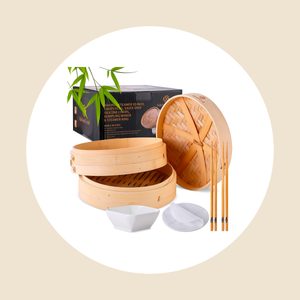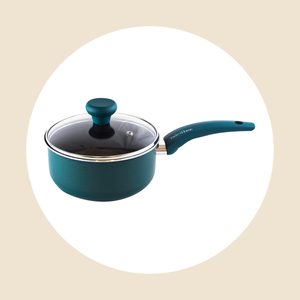How Peloton Instructor Emma Lovewell Celebrates Lunar New Year
Updated: Dec. 15, 2023
Celebrity fitness instructor Emma Lovewell celebrates life, luck and longevity in the Lunar New Year with traditions passed down through her family.

Even if you’ve never actually met Emma Lovewell, once you’ve taken a class from the celebrity fitness phenom, you already feel as if she’s your soon-to-be best friend. An instructor for the wildly popular virtual fitness brand Peloton, Emma finds a balance between tough coach and encouraging gal pal as she leads riders through heart-pumping cycling workouts.
Meet Emma Lovewell
Off the bike, Emma is a Renaissance woman, giving her more than 500,000 Instagram followers glimpses into her busy life. One day she’s holding a power drill as she’s renovating her kitchen, the next she’s leading a tour of her expansive vegetable garden. She posts cute photos of her cat, Kimchi, alongside delicious-looking homemade recipes (read on to see some of Emma’s favorites).
On her blog, Live Learn Lovewell, she shares those recipes and more. She has a warm smile and an effortlessly cool disposition, and it seems as if there’s nothing she can’t tackle with ease. But even with all her talents, when you ask her to name one of her biggest points of pride, it all comes back to her Taiwanese roots.
Emma’s mother, Teresa, was born in Taiwan and lived there until she was 19, when she moved to the United States. She eventually settled on Martha’s Vineyard, the Massachusetts island where Emma and her brother, Alan, were raised. The island wasn’t exactly a hotbed of Asian culture, so Teresa had to get creative to ensure her children had a connection to their heritage.
How Emma Learned to Cook

“Around the time I was in junior high, my mom used to teach Chinese cooking classes on the Vineyard once a week,” Emma recalls. “She would invite a group of five or so people into our kitchen and would teach them how to make standard dishes like sweet-and-sour chicken or different types of stir-fries. I would watch and learn Chinese cooking from her, too.” Growing up in a small island town meant that if you wanted to eat traditional Chinese dishes, you’d better get comfortable in the kitchen. And forget about sourcing specialty ingredients from a nearby store.
A couple of times a year, the family would take a trip to Boston’s Chinatown, where they’d load up on preserved items and spices to use in cooking back home. But Teresa’s green thumb came in handy, too. “My mom is an avid gardener,” Emma says. “She would buy seeds for exotic Asian vegetables that you can get only in certain places, and she would grow them because there’s obviously not a true Asian grocery store on Martha’s Vineyard.”

Emma’s school lunches looked a bit different from those of her classmates (“My mom would pack things like Chinese tea eggs and I would get lots of questions,” she says), and it wasn’t always the easiest growing up half Taiwanese. “I never felt like I was Asian enough or white enough,” Emma says. “So I had a difficult connection to my culture then.” But now Emma looks back and is proud that her mother immersed her deeply in these traditions.
Celebrating Lunar New Year
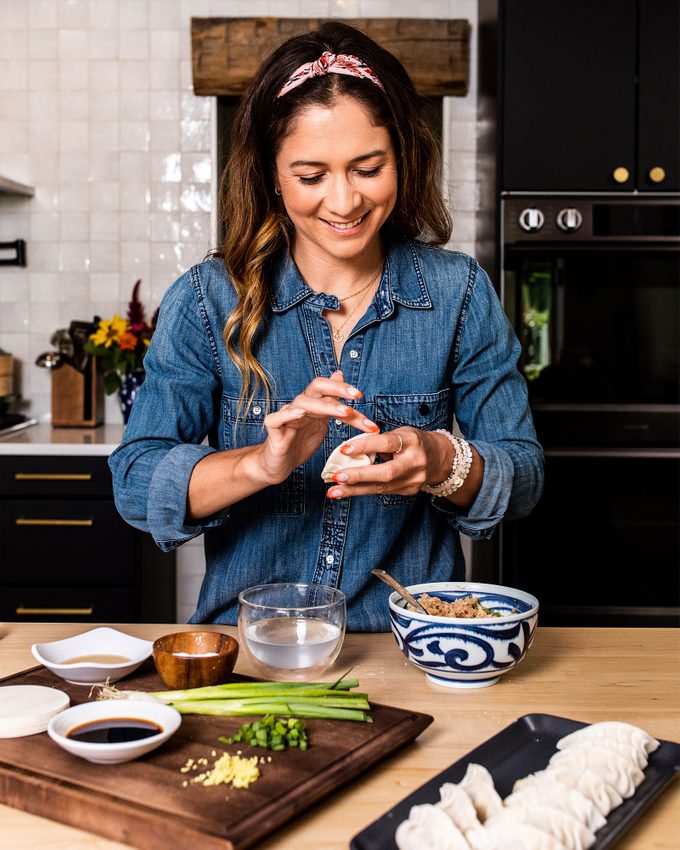
One of those traditions is the celebration of the Lunar New Year. “We would gather around the table in a spirit of gratitude,” Emma says. “There was always so much food. We’d eat Chinese hot pot, noodles and so many dumplings.”
Many of the foods served at the holiday are meant to symbolize luck in the coming year. Noodles symbolize longevity, dumplings are meant to represent money purses for wealth, and fish stands for abundance. “In Mandarin,” Emma explains, “the pronunciation for fish (yu) and abundance is the same. So that’s why you’ll typically see fish on the table.”

To celebrate the holiday with her Peloton family last year, Emma hosted a Lunar New Year cycling class, which has been taken by more than 80,000 riders. She shared her family traditions and dedicated the ride to her mother and her 105-year-old po po (grandma), Mary. (Her secret to longevity? “She eats really, really well,” Emma laughs.) Their dedication to their culture has helped shape who Emma is today.
“How amazing is it that I get to be here celebrating the Lunar New Year with you?” she asks near the end of class. “Once we learn more about each other, we learn how more alike we are.”
And if that lesson begins surrounded by amazing food, good cheer and a hopeful outlook, there’s no luckier way to begin a new year.
Emma’s Lunar New Year Menu
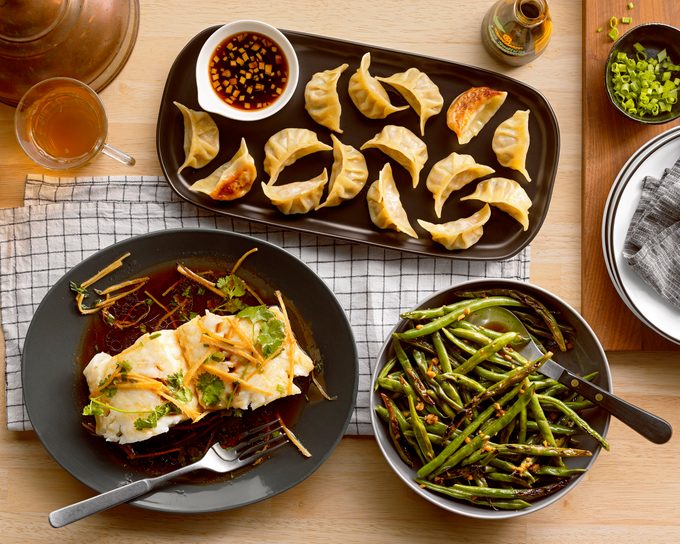
For this year’s celebration, Emma shared three of her favorite recipes with us: steamed fish, soy-glazed green beans and homemade pork dumplings. The first two recipes are below. Emma also showed us how to make the dumplings step by step.
Tools for Making Emma’s Recipes
Ginger, Scallion & Soy Steamed Fish
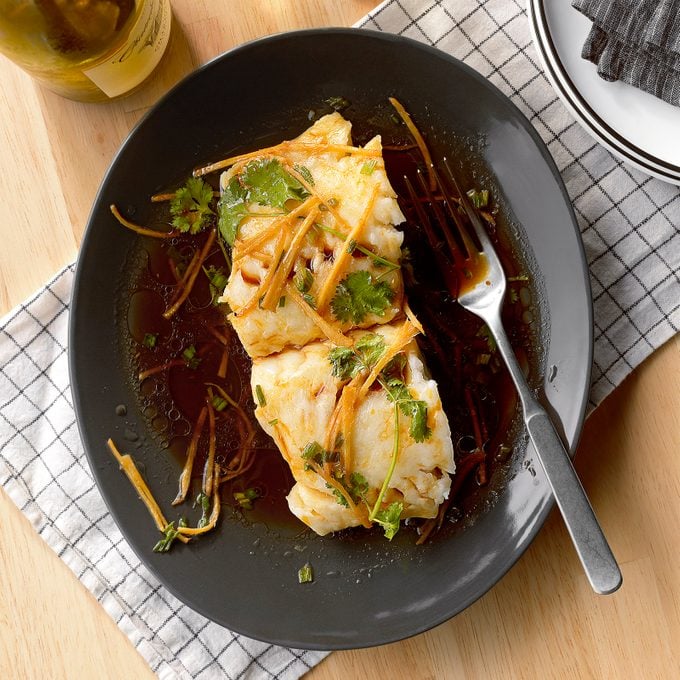
Eating steamed fish is a lucky Lunar New Year tradition, since fish is meant to represent prosperity to come,” says Emma. “My version is light and fresh with a zing of ginger.” Often on Lunar New Year, fish is served whole, but this filleted version will be just as lucky. The steamed fish, which serves four, takes 15 minutes to prep and 20 to cook.
Ingredients
- 2 green onions, thinly sliced
- 2 Tbsp. julienned fresh gingerroot
- 4 fresh cilantro sprigs
- 1/4 cup reduced-sodium soy sauce
- 2 Tbsp. hot water
- 1 Tbsp. mirin (sweet rice wine)
- 1/4 tsp. salt
- 1/8 tsp. sugar
- 1 whitefish fillet (1-1/2 lbs.), such as sea bass, cod or branzino
- 3 Tbsp. canola oil, divided
Directions
Step 1: Combine the aromatics and sauce ingredients
In a small bowl, combine green onions, ginger and cilantro. In another small bowl, stir together soy sauce, hot water, mirin, salt and sugar until dissolved. Set both bowls aside.
Step 2: Steam the fish
Prepare a wok for steaming or place a steamer basket in a large saucepan over 1 in. water; bring to a simmer. Place the fish on a heat-proof plate that will fit in steamer; place plate in steamer. Adjust heat to maintain a gentle simmer. Cover and steam until fish just begins to flake easily with a butter knife, 10-15 minutes.
Step 3: Make the sauce
Meanwhile, in a small saucepan, heat 2 Tbsp. oil until hot. Add two-thirds of the ginger mixture; stir-fry 1 minute or until very aromatic. Add soy sauce mixture; simmer until onions and cilantro are wilted, about 30 seconds.
Step 4: Finish the fish
Drain any liquid from the fish plate. Pour soy mixture over fish. Top with remaining ginger mixture. In a small skillet, heat remaining 1 Tbsp. oil until hot. Pour over the ginger mixture. Serve immediately.
Sesame-Soy String Beans
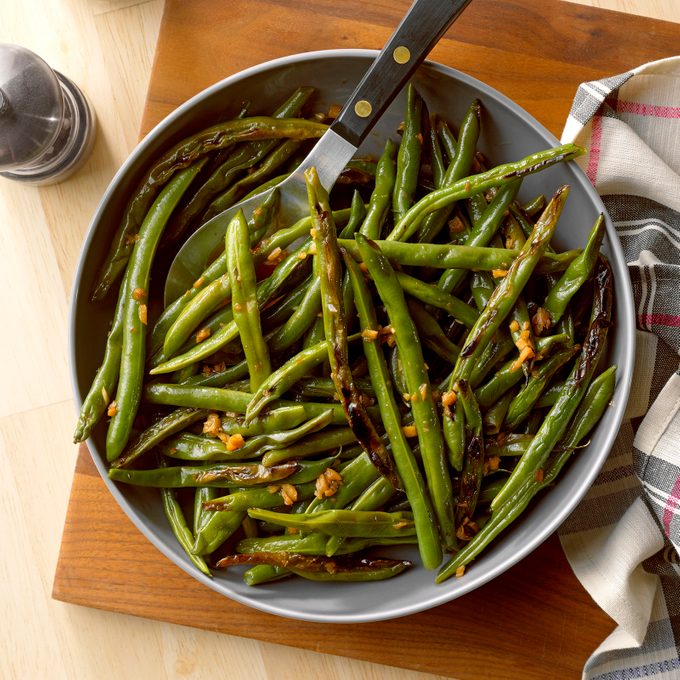
These crisp green beans will make a delicious, healthy side dish for your celebration—or any dinner, really! “They get their wonderful umami flavor from a simple dressing using sesame oil and soy sauce,” Emma says. These beans take 20 minutes, start to finish, and serve four.
Ingredients
- 2 Tbsp. canola oil
- 1 lb. fresh green beans, trimmed
- 3 Tbsp. reduced-sodium soy sauce
- 1 Tbsp. sesame oil
- 1/4 cup water
- 2 garlic cloves, minced
- 1 tsp. minced fresh gingerroot
Directions
In a large skillet or wok, heat oil over medium-high heat. Add beans and cook 2 minutes. Gradually add soy sauce and sesame oil, stirring constantly. Add water; cook, covered, 5 minutes. Stir in garlic and ginger; cook, uncovered, until beans are crisp-tender and water has cooked off, 3-5 minutes.

